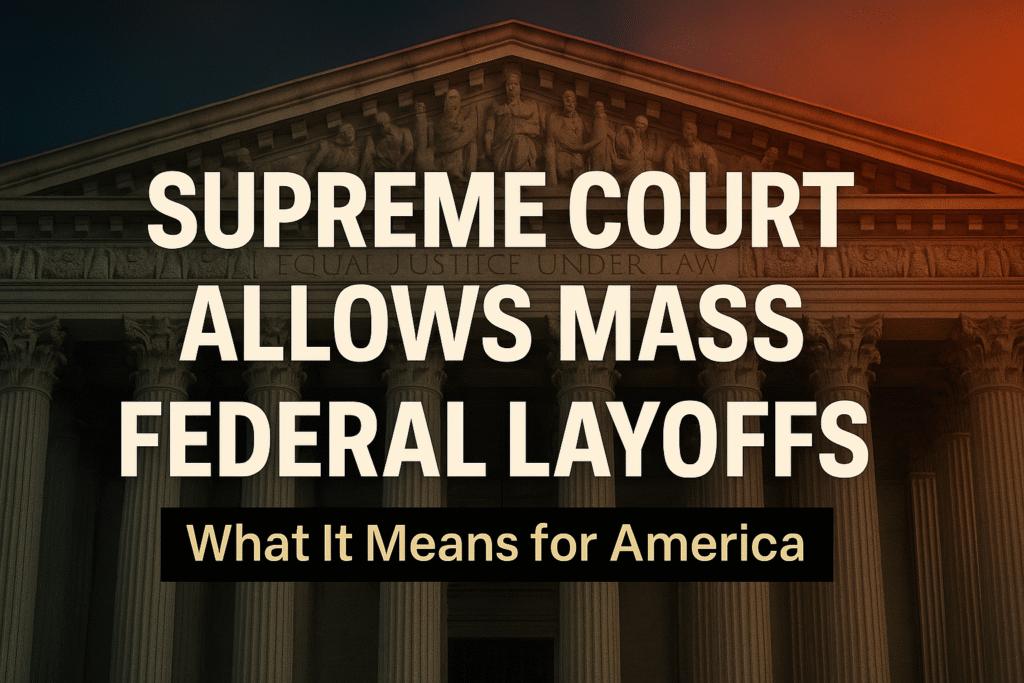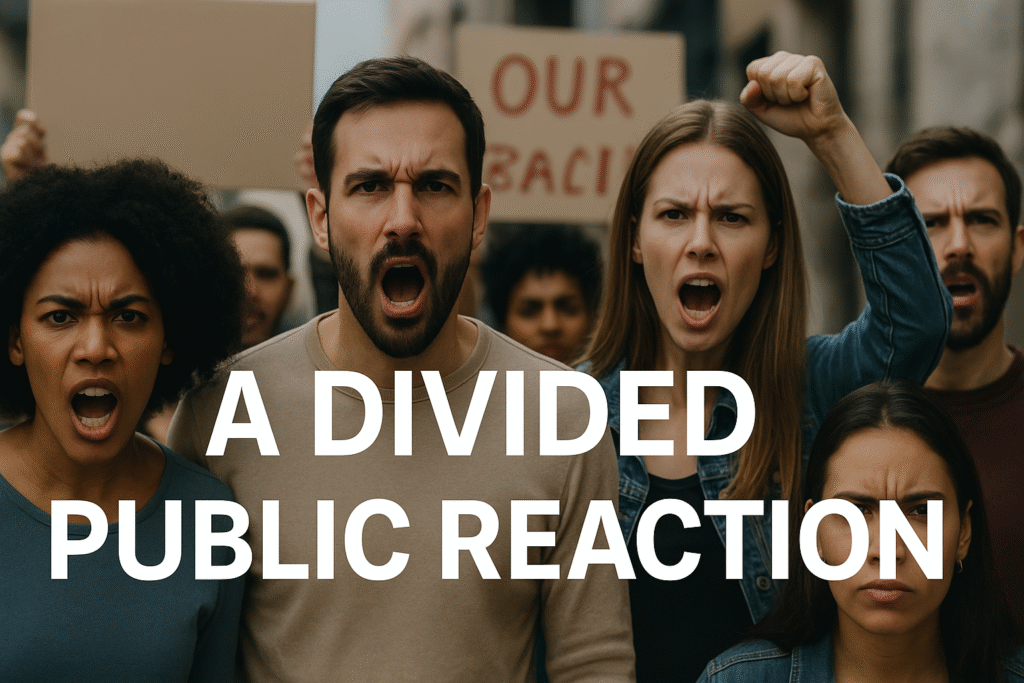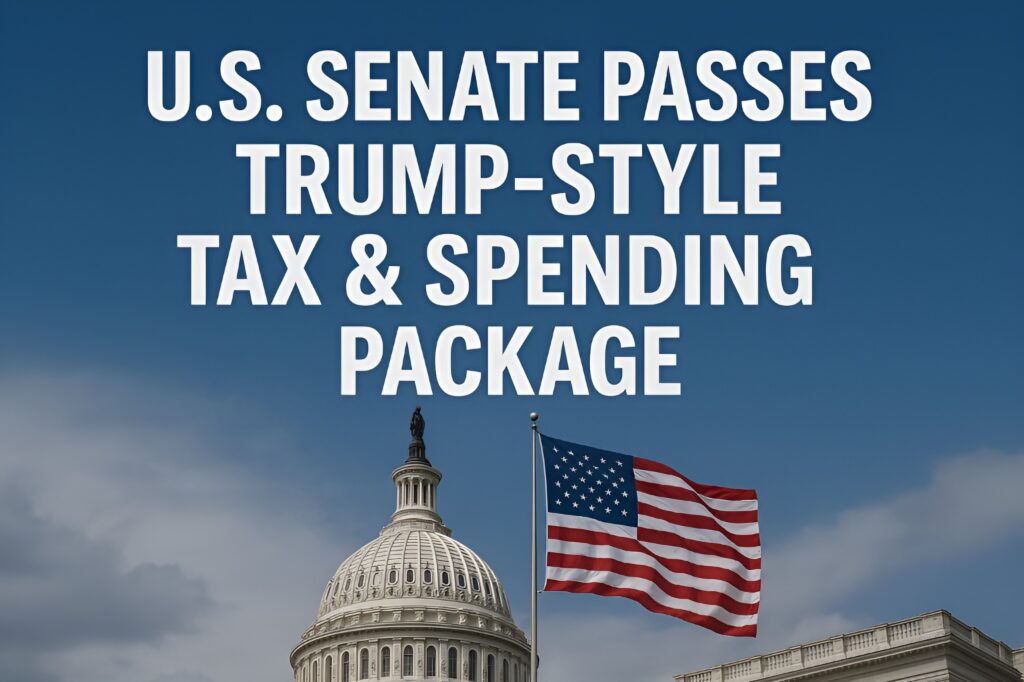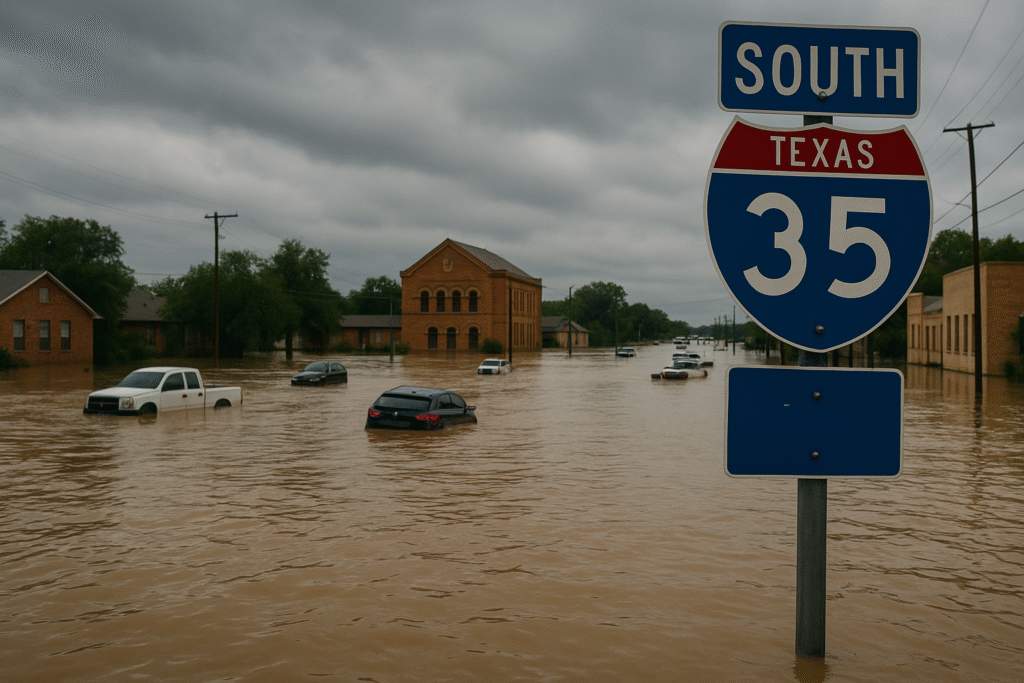
In a historic and controversial step, the Supreme Court of the United States has made clear how the federal government can significantly reduce its workforce. This is a decision that will allow us to redesign American public services for the next few years. While some critics have celebrated it as a victory for national efficiency, they warn of serious consequences for public trust, essential services, and national stability.
What the ruling said
The Supreme Court of the United States confirmed the authorities’ approval to significantly reduce federal authorities without the direct approval of Congress. This allows executives to take more control to implement comprehensive changes to personnel, even in departments that are historically protected from rapid restructuring.
Supporters argue that the decision will help eliminate the government and reduce unnecessary costs. But right-wing experts and union leaders believe it could undermine the basic review of American democracy.
SEO Keywords: Supreme Court ruling of 2025, US government layoffs, federal cuts, administrative power supply, administrative power supply US
- Federal workers immediate concern decisions were immediately checked.
- Social Security Management—Possible cuts can lead to longer delays.
- Veterans Issues (VA)—Wide range of concerns about increased health wait times for veterans.
- Environmental Protection Agency (EPA)—significantly reduces enforcement of critical regulations.
- Reductions in Health and Human Services (HHS) can reduce programs aimed at supporting low-income and public health families
- Supreme Court of the United States facing protest
- As expected, if a layoff occurs, more than 150,000 federal positions can be removed in early 2026.
How does this affect everyday Americans?
This decision can not only create federal employees but also affect the quality and speed of service that Americans rely on every day. From tax refunds to healthcare, education, and environmental protection, it is now present, delayed, or reduced.
Imagine waiting months for access to Social Security Services and gross scholarship programs that fund public schools. This is a reality that many experts can warn about
Historical Background and Lessons Learned
This is not the first time the federal government has tried to reduce mass reductions. In the 1980s, the state’s massive cuts slowed public services significantly. The results include delays in processing IRS tax returns
Veteran Disability Claims
Reduction in environmental surveillance
That era may provide a modest warning.
Economic ripple effects
Workplace losses of this size are not limited to Washington. The local economies in states, especially those with large federal authorities such as Maryland, Virginia, and Pennsylvania, could feel a sense of crisis. Federal entrepreneurs and surrounding businesses relying on government spending are also expected to experience a decline in income and layoffs.
A Divided Public Reaction

As expected, Americans are split. Some rejoice the pass as long-past-due reform, even as others worry it`s an assault on civil provider protections.
📣 “Its approximately time Washington wiped clean house.”
📣 “You simply created 150,000 greater unemployed Americans.”
📣 “Cutting people isnt reducing waste—it is reducing function.”
Public protests and city corridor conferences are already being scheduled in swing states beforehand of the 2026 midterm elections.
Political and Constitutional Debate
Critics argue this selection undermines Congress` authority, a cornerstone of the U.S. Constitution. By permitting the government department to behave unilaterally, many worry this ruling sets a precedent that might result in unchecked governmental electricity.
Meanwhile, the American Federation of Government Employees (AFGE) has pledged to protest the ruling, exploring legislative and criminal avenues to guard jobs.
What Happens Next?
Agencies will start strategic evaluations to decide in which cuts may be made.
Unions and watchdogs will combat again through courts and political lobbying.
Citizens need to live knowledgeable and involved, mainly in the states most affected.
There’s developing strain on federal departments to discover opportunity cost-reducing measures like automation, stepped-forward virtual processes, and cross-corporation collaboration—without putting off important jobs.
Final Thoughts: A Turning Point in American Governance
This selection marks a turning factor in how the U.S. authorities are featured and the way they treat people who serve them. It raises essential questions on performance vs. accountability, cost-reducing vs. provider delivery, and electricity vs. oversight.
Whether it results in lasting reform or turns into a cautionary story of political overreach, the fallout from this ruling will shape federal operations, public opinion, and electoral effects for years.
Staying knowledgeable through daily current affairs is now more crucial than ever
What did the Supreme Court of the United States rule about the federal workforce?
The Supreme Court ruled that the President has the authority to significantly reduce the federal workforce without direct congressional approval. This landmark decision may lead to widespread job cuts in federal agencies and major changes in how the U.S. government operates.
How many federal jobs are expected to be affected
Estimates suggest that over 150,000 federal jobs could be eliminated by early 2026. This includes positions in key departments like Social Security, Veterans Affairs, EPA, and Education.
Which government departments are most at risk
The Department of Education, Social Security Administration, Environmental Protection Agency (EPA), Veterans Affairs, and Health and Human Services are among the most impacted. These departments could see major staff cuts or program eliminations.
How will this ruling affect government services?
The ruling could lead to delays in services such as benefit approvals, environmental regulation enforcement, healthcare for veterans, and support programs for low-income communities.



